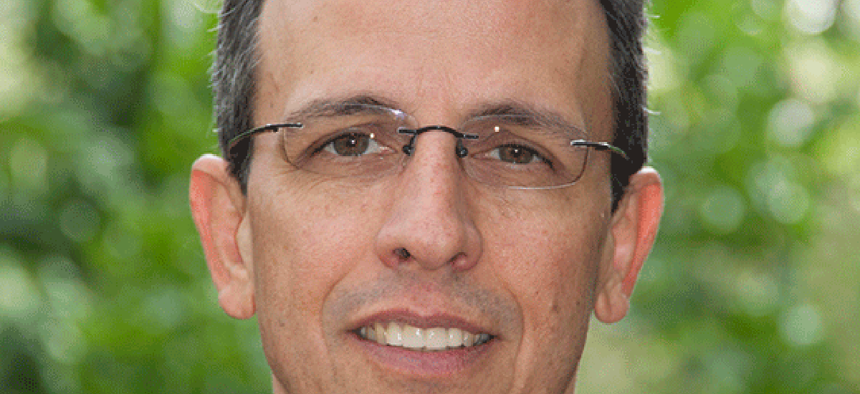Violence In the Shelter: The Price of Underfunding

If you expect to die at work, raise your hand.
I imagine not seeing many hands. In fact, I imagine not seeing any hands. No one expects to die at work, not even police officers and firefighters, much less social workers and their colleagues fighting the good fight in the nonprofit sector. In my 10 years working with psychiatrically and medically disabled homeless adults in programs at Coalition for the Homeless, CAMBA and Project Renewal, I had heard of only two assaults, though undoubtedly there were more. But never murder.
Late in the afternoon on Monday, April 27, 2015, my friend and colleague Ana Isabel Charle was abducted, sexually assaulted and shot to death as she left work at Project Renewal’s Bronx Boulevard Men’s Shelter, a 108-bed shelter for single adult men with mental illness located in the Bronx.
Ana and I had been clinical directors at two CAMBA-run shelters in Brooklyn, and in December 2013 she’d asked me to come on board as she prepared to open Bronx Boulevard Men’s Shelter. Since I was unable to join her team, Ana recommended me for a program director position at one of Project Renewal’s OMH-licensed transitional residences. I got the job, and once again we were at the same organization, leading our teams in the effort to help the single adult mentally ill population rebuild their lives.
Ana’s killer had his sights set on my 36-year-old friend and colleague, a mother of two young girls. At a vigil held in front of the shelter on May 6, word had it that he had told other shelter residents, “I’m going to kill that b*tch.” If true, why didn’t anyone say anything? Was it the no-snitch culture that permeates the streets? Or that so many threats are bandied about every day no one pays much attention anymore? Was it a conscious and all-too-common choice not to get involved?
Ana’s death brought Project Renewal to its knees, rocked the homeless services community and sent shockwaves through the entire city. During a June 2015 memorial, Project Renewal President and CEO Mitchell Netburn renamed “Bronx Boulevard,” as the shelter was commonly known, “Ana’s Place,” in her honor.
Much of our ensuing discussion in the homeless services community centered on increasing security, improving staff training and meeting the challenges posed by the reintegration of violent felons with mental illness. I’ve spent a lot of time thinking about what may have been missed in the time leading up to this heinous crime and how, going forward, we can minimize the chance of missing critical clues to impending disaster while working with a fragile, displaced community of mentally ill homeless people.
While focusing on security and training certainly makes sense (there is never enough of either), the time, money and effort being spent needs to be balanced in favor of detection and intervention before violence occurs. This can best be achieved by front-loading the response of homeless services providers to potential crises – through hiring more qualified and better paid staff, in sufficient numbers – rather than back-loading the response by increasing security and training budgets after someone has been killed or injured.
I recently met with a colleague who is a program administrator for a New York City-based nonprofit that he saids holds “13 or 14 city contracts” to run “about 73 shelters.” In discussing a wide range of shelter-related issues, we touched upon staffing at one of his programs, a 200-bed Bronx shelter for mentally ill chemically addicted women. I asked what his organization’s educational requirement is for case management staff. He answered, “A high school diploma or GED,” sheepishly adding that they’re hoping to improve the educational standard to require “some college.” “But right now,” he added somewhat forlornly, “Our main focus is getting more beds on line.”
With the shelter system bursting at the seams, I felt for my colleague. We both understand the enormous challenge of running shelters for mentally ill, substance-abusing adults with front line staff whose highest level of education is, in most cases, a high school diploma or GED. Nothing against those whose education stopped after high school or after having obtained their GED – with salaries at roughly $32,000 to $38,000 per year, the system isn’t offering the competitive pay that would attract individuals with college degrees. These hardworking, dedicated case managers and other lower-paid front line staff have way too much asked of them while being inserted into situations they are, in many cases, ill-equipped to manage.
If we want social services programs serving the homeless and mentally ill to work to the benefit of us all, we need to press our leaders to provide enough funding to hire qualified professionals in sufficient numbers. Putting social workers with college-level experience on the front lines of the homelessness crisis in our city will automatically increase security by enhancing a program’s ability to better manage the most challenging and potentially dangerous clients. Program staff need the time and space to engage and discover and intervene when a deeply troubled man with a violent history is walking around saying he’s going to kill a specific person and also wondering aloud how to talk to girls.
Without an immediate commitment to fund the appropriate staffing of our shelters, tragedies like Ana’s murder will become the cost of doing business. So in the aftermath of this senseless act, I continue to wonder, will nonprofits fighting the good fight be provided the resources and tools to engage their troubled clients appropriately? Will our thought leaders and politicians work to fill the gaps in “the system” and keep workers safe? Or are we waiting for more headlines?
Craig Moncho is a NYS-licensed Social Worker who has served the homeless in New York City since 2005. He blogs at www.thesocialworkpractitioner.com.
NEXT STORY: Finger pointing on property tax reform